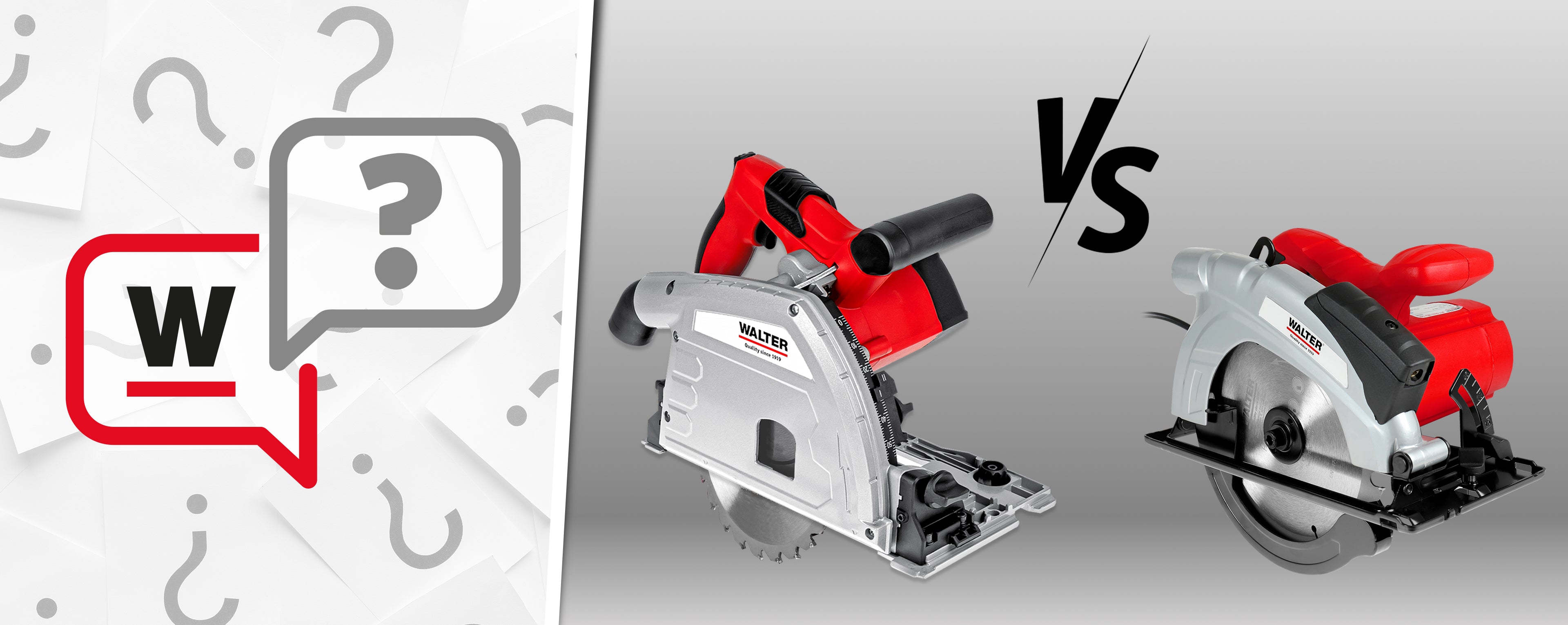Plunge saw or hand-held circular saw: Which is better?
Despite their similar appearance, these two saws differ in function and application. If price isn't a deciding factor for you and you want versatile and precise DIY work, the plunge-cut saw is the better choice. If you want to cut coarser wood or plastic without plunging, the hand-held circular saw is the right choice. You'll learn below which tool is better suited for which projects and what other features they offer.
What are the differences?
The main difference is where the saw blade is when stationary .
- A plunge-cut saw has the saw blade completely enclosed in the housing when stationary. It only emerges when plunging into the material. This allows for precise entry and cutouts at any point on the workpiece without having to start from the edge.
- A hand-held circular saw always has the saw blade partially exposed and starts the cut at the edge of the workpiece. It is ideal for long, straight cuts , but is less flexible for cutting into the middle of the material.
What is a plunge saw?
Plunge saws allow for precise cuts without having to be placed on the material's surface first. Their plunge action allows the saw blade to plunge directly into the material from above. You don't have to start sawing at an edge.
This saw is ideal for cutting out recesses in kitchen countertops and creating shadow gaps. A guide rail also increases cutting precision.
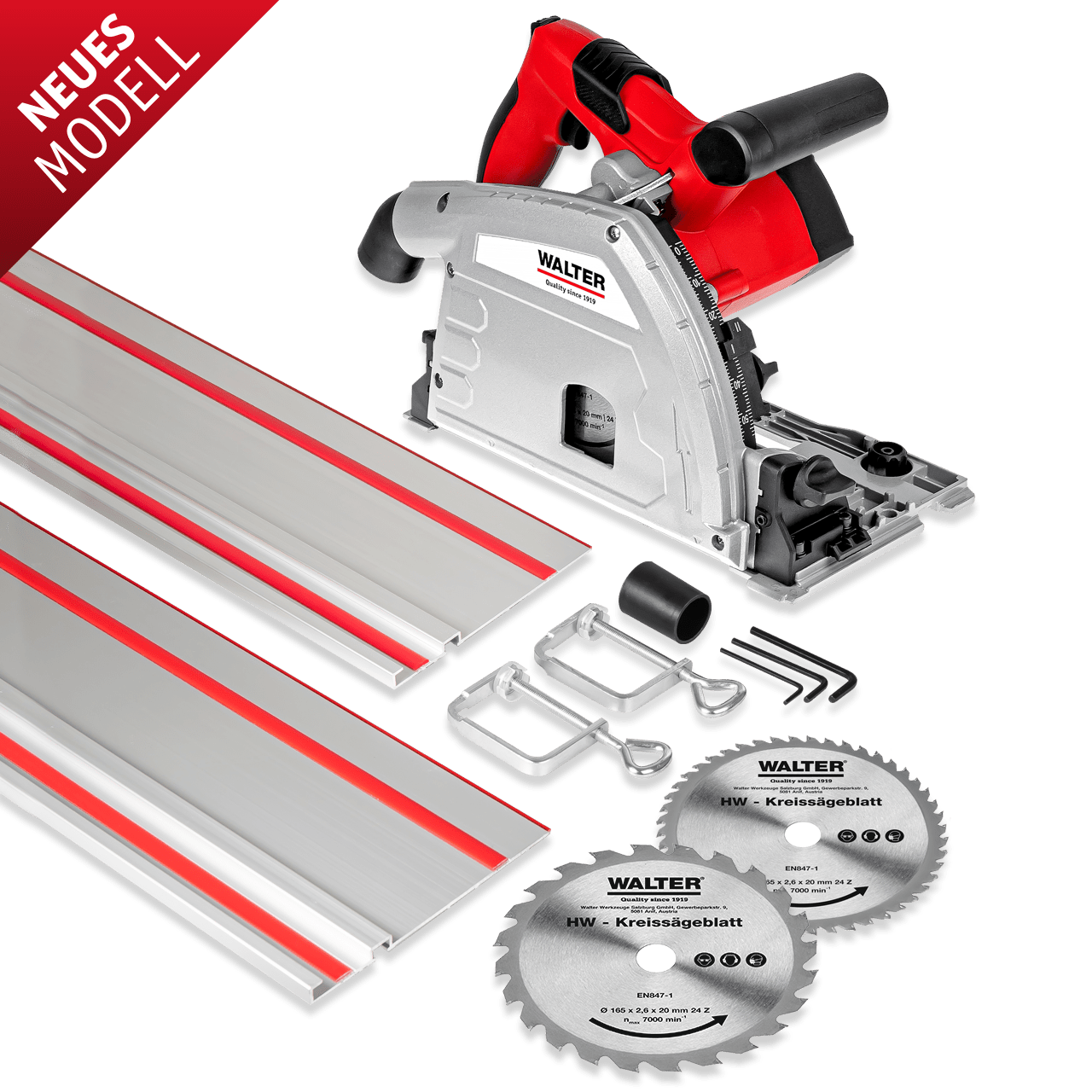
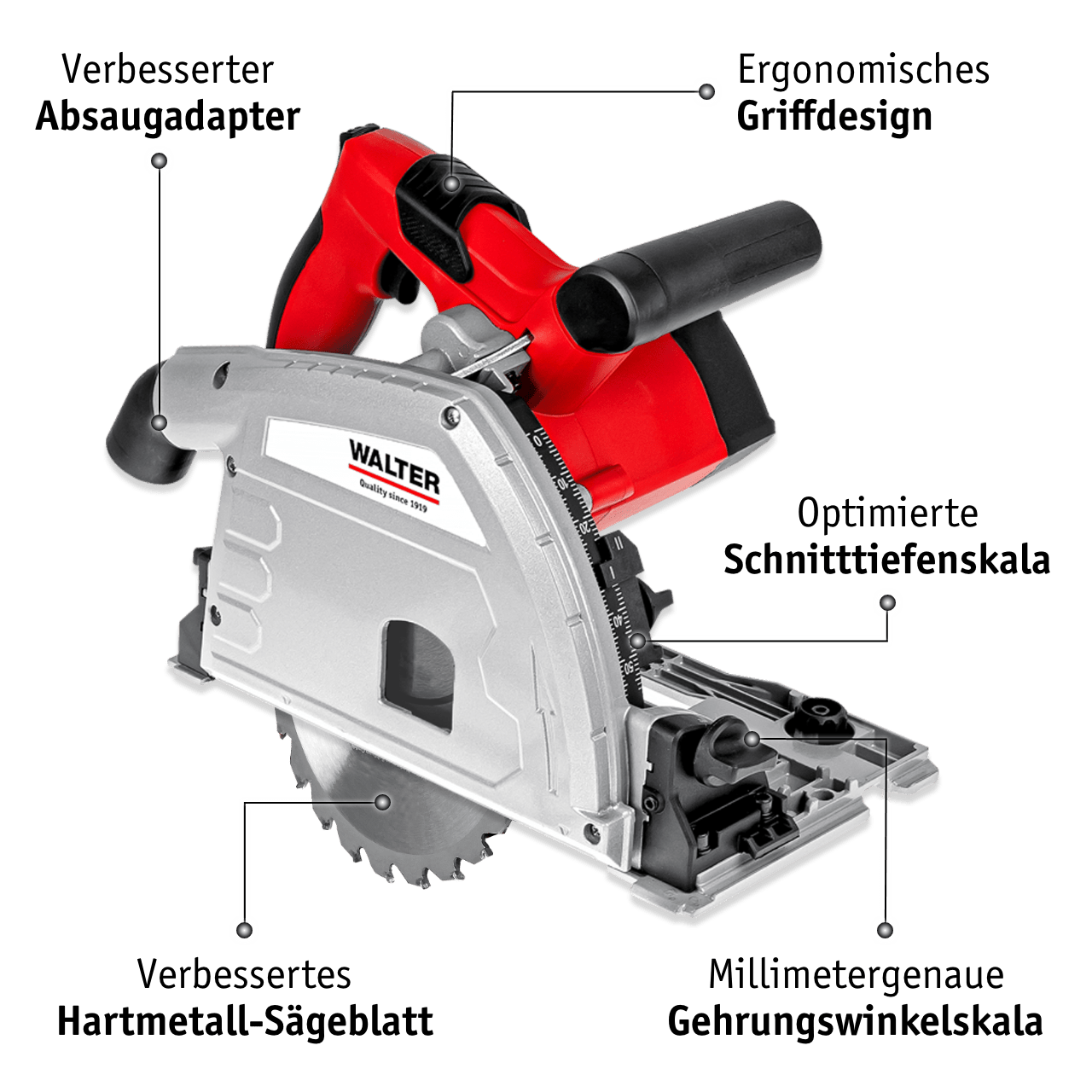
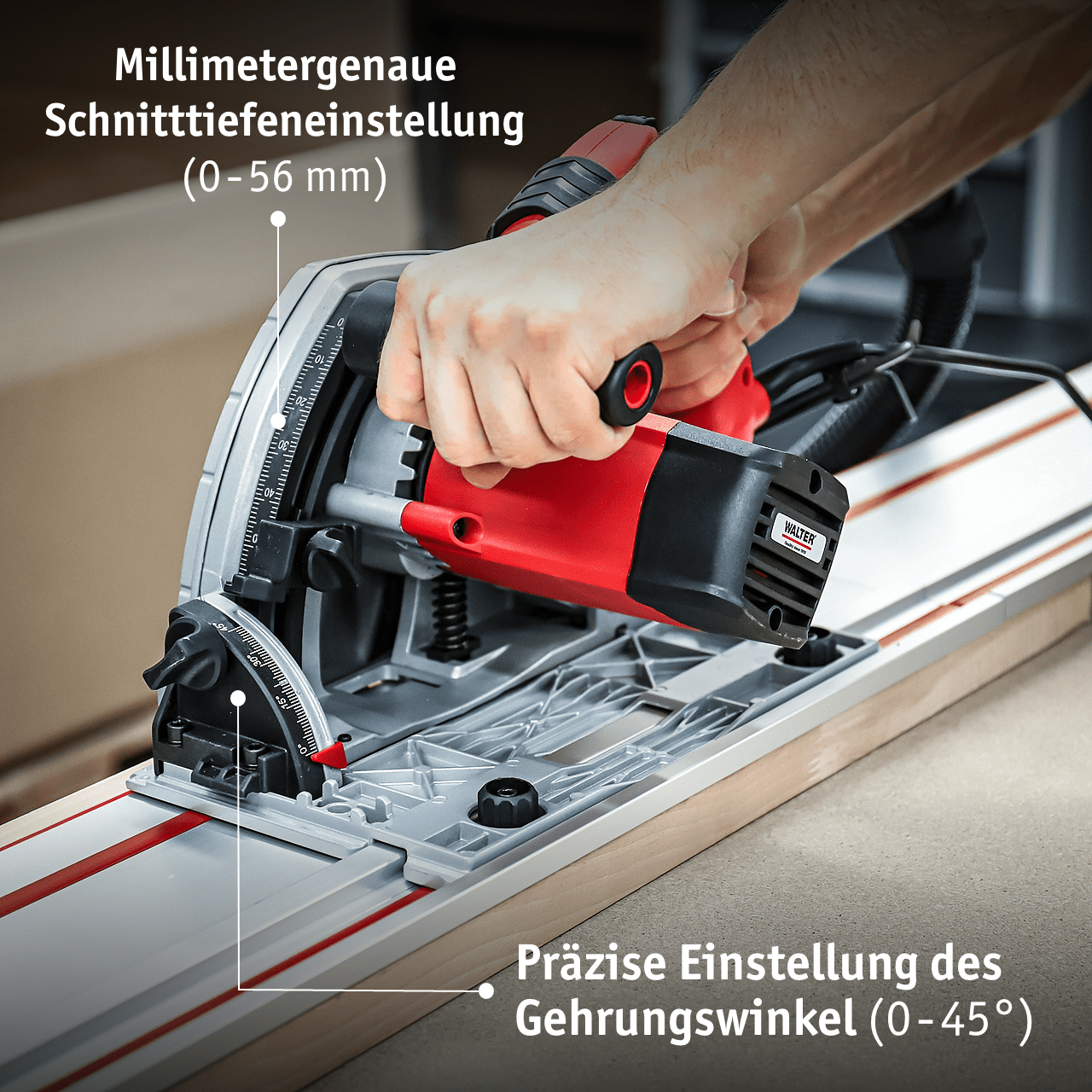
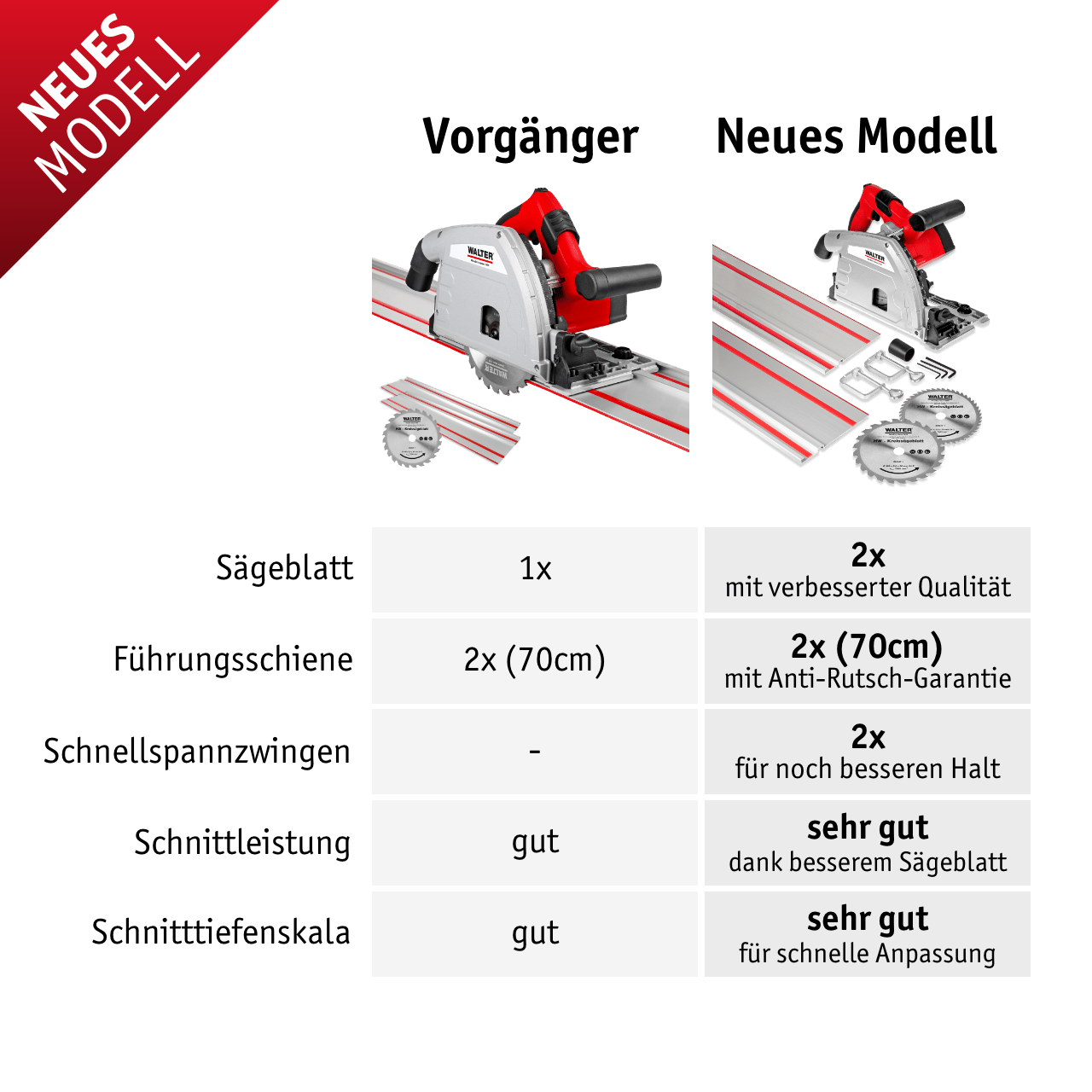
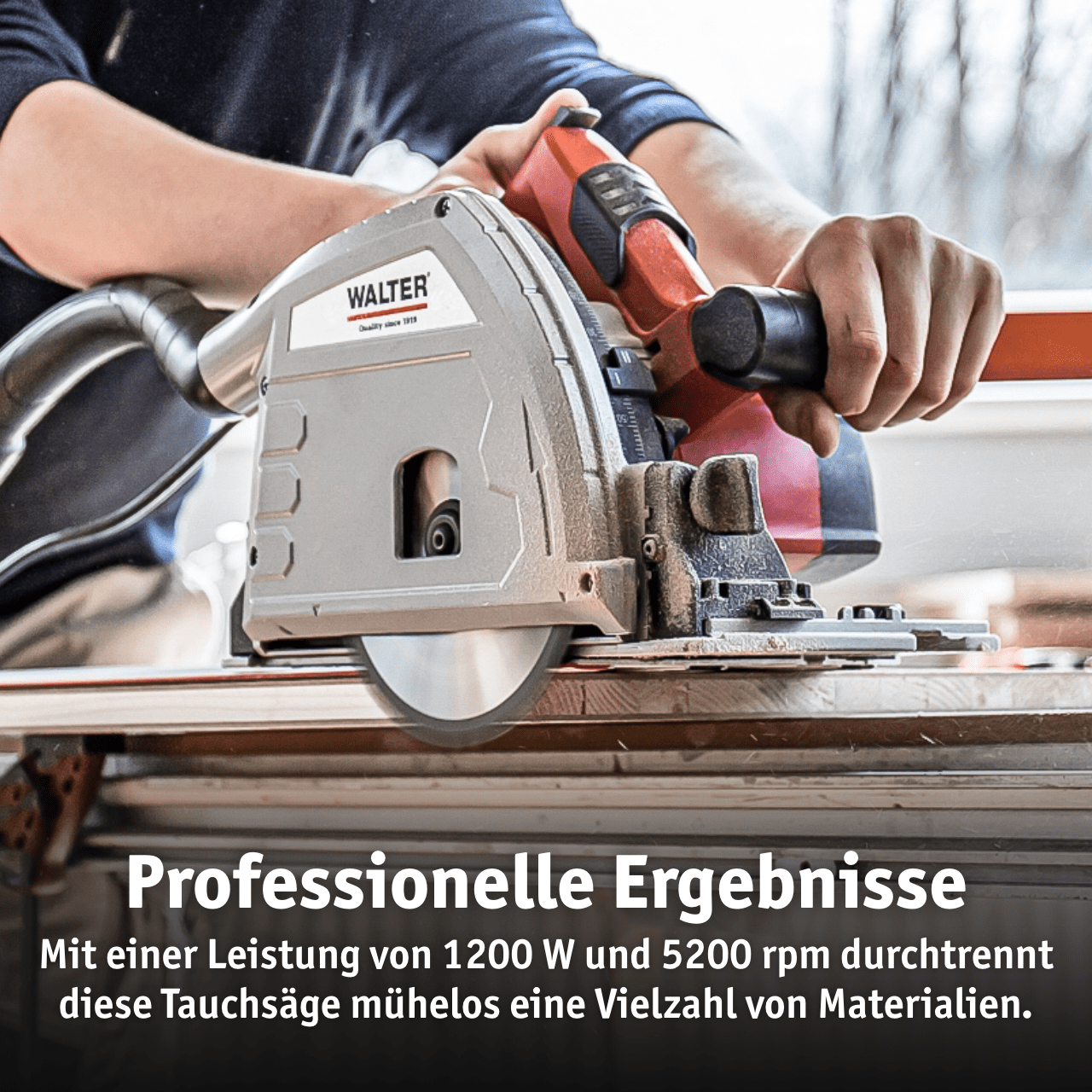
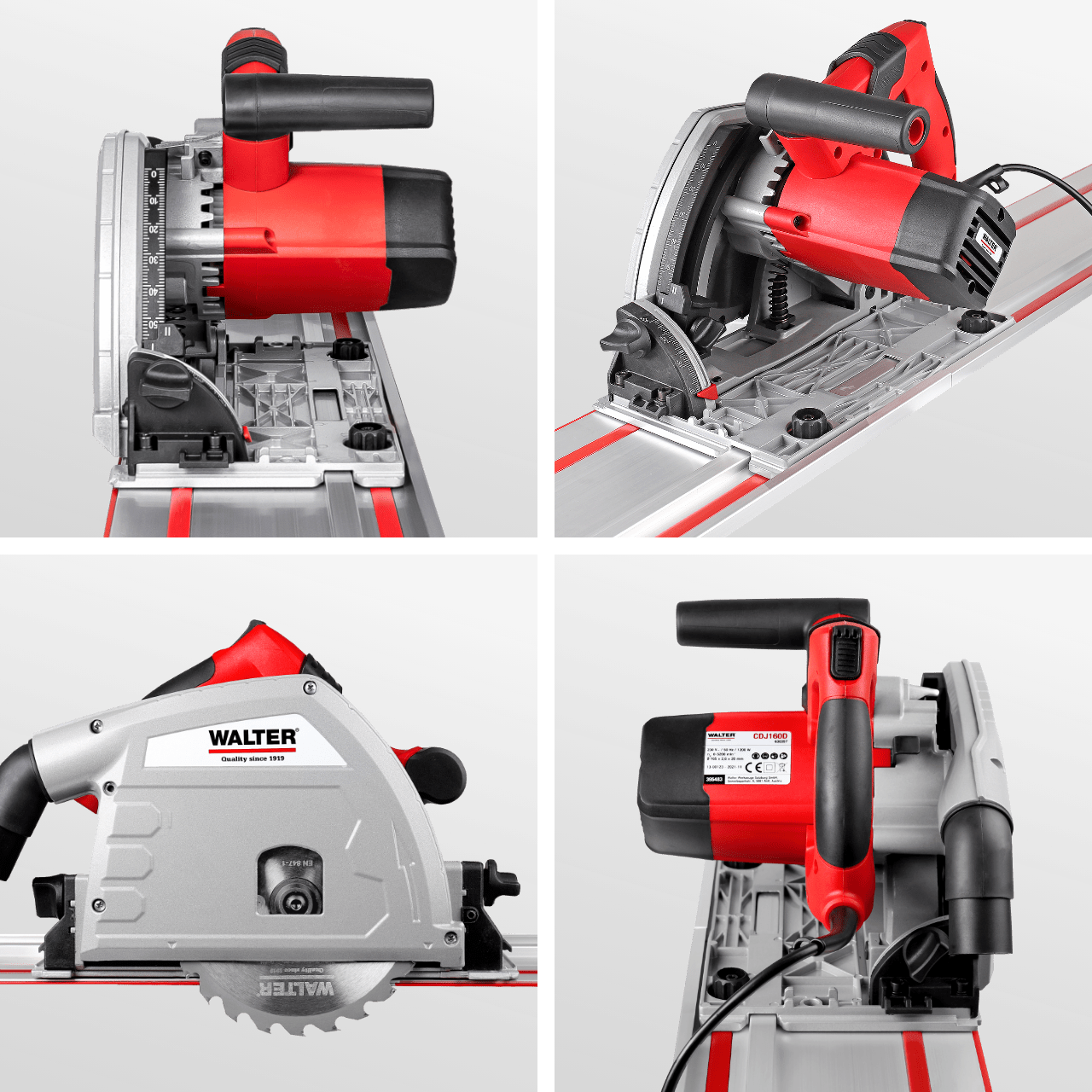
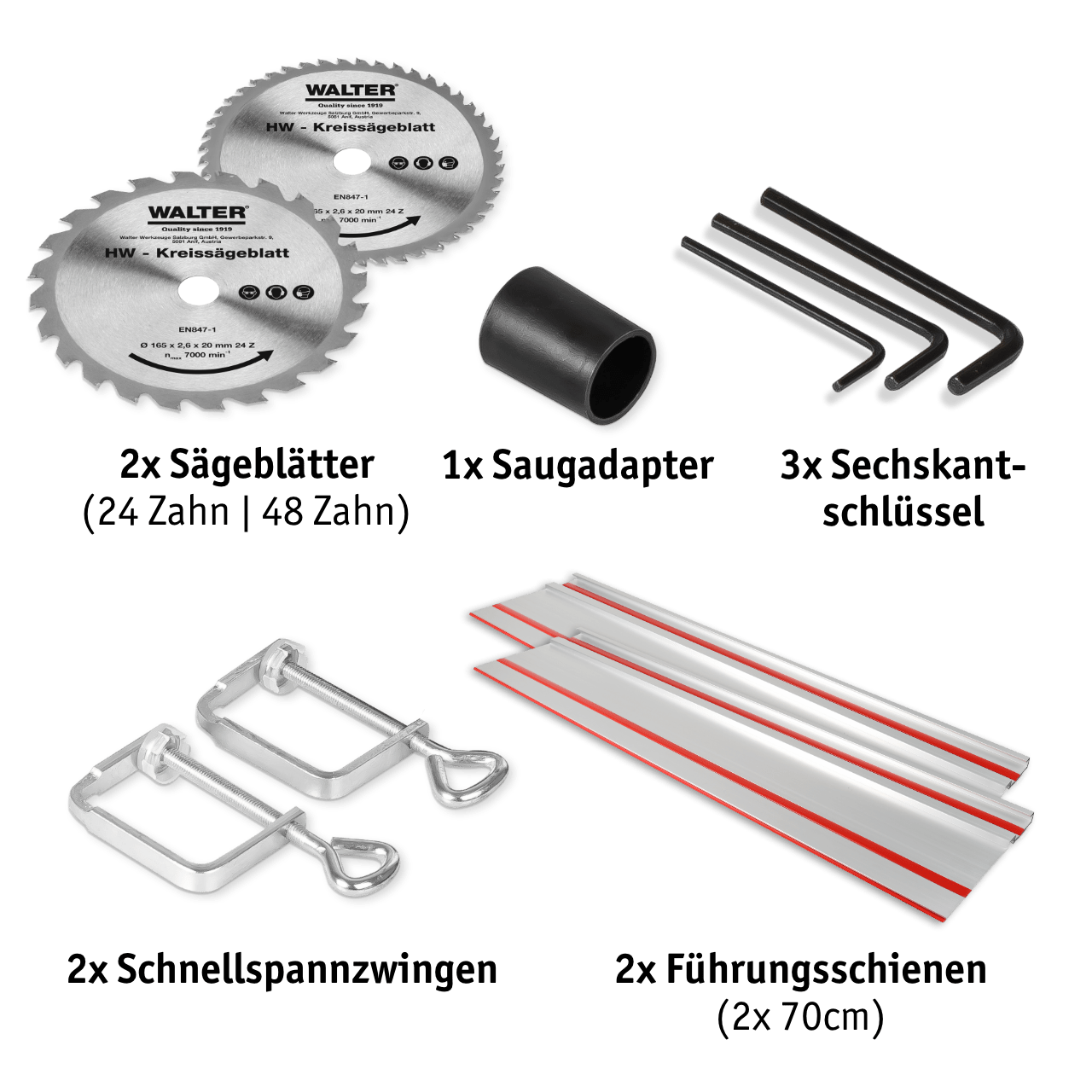
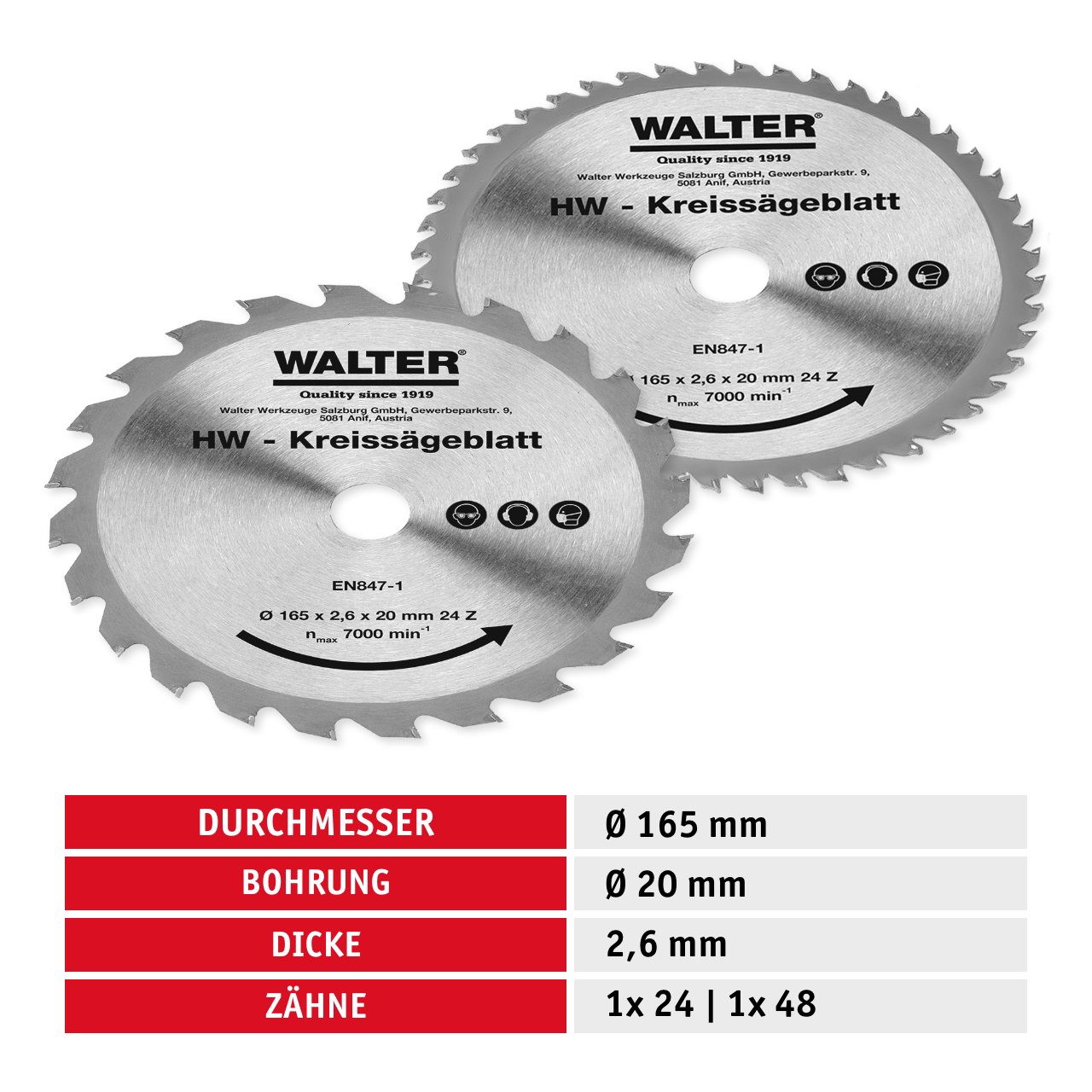
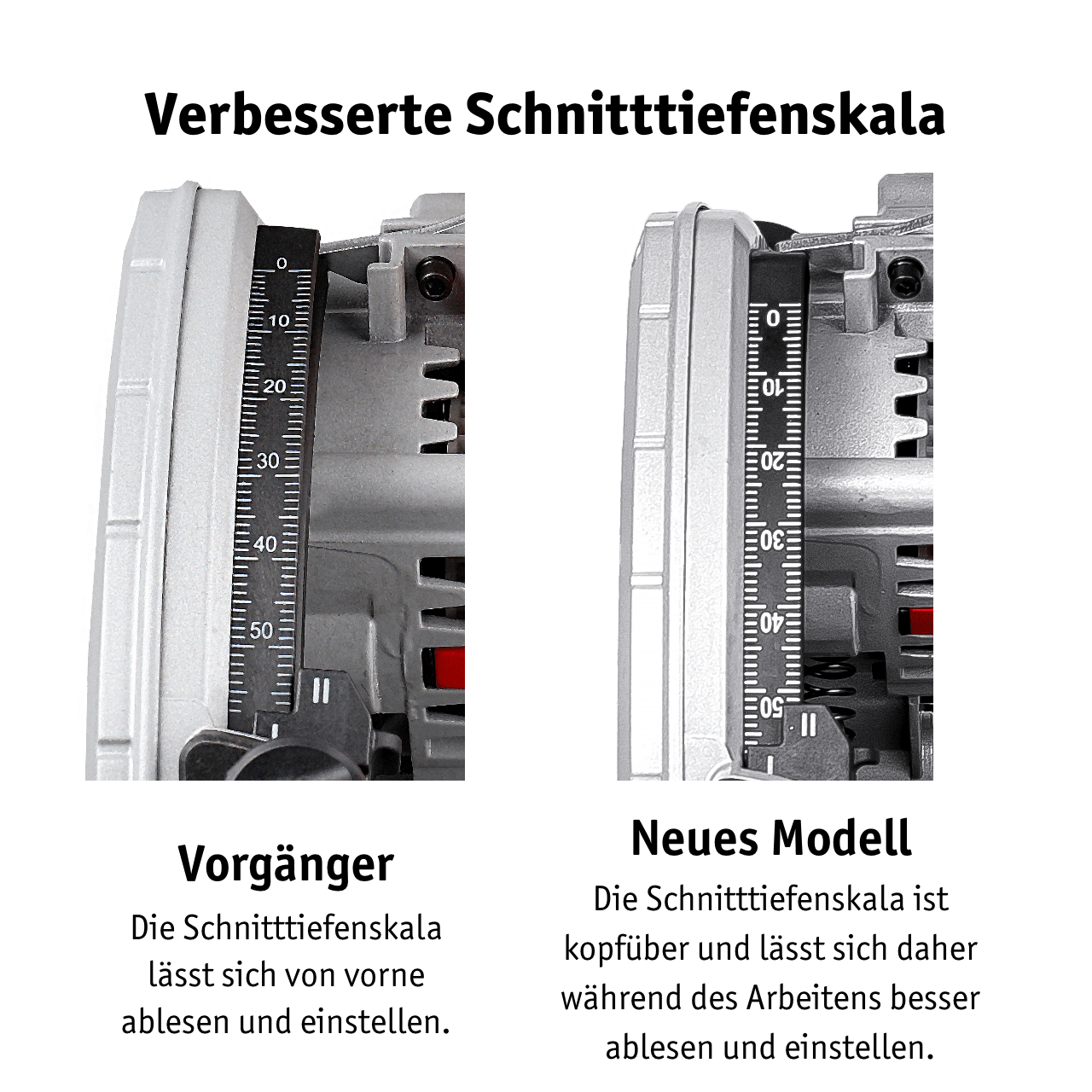
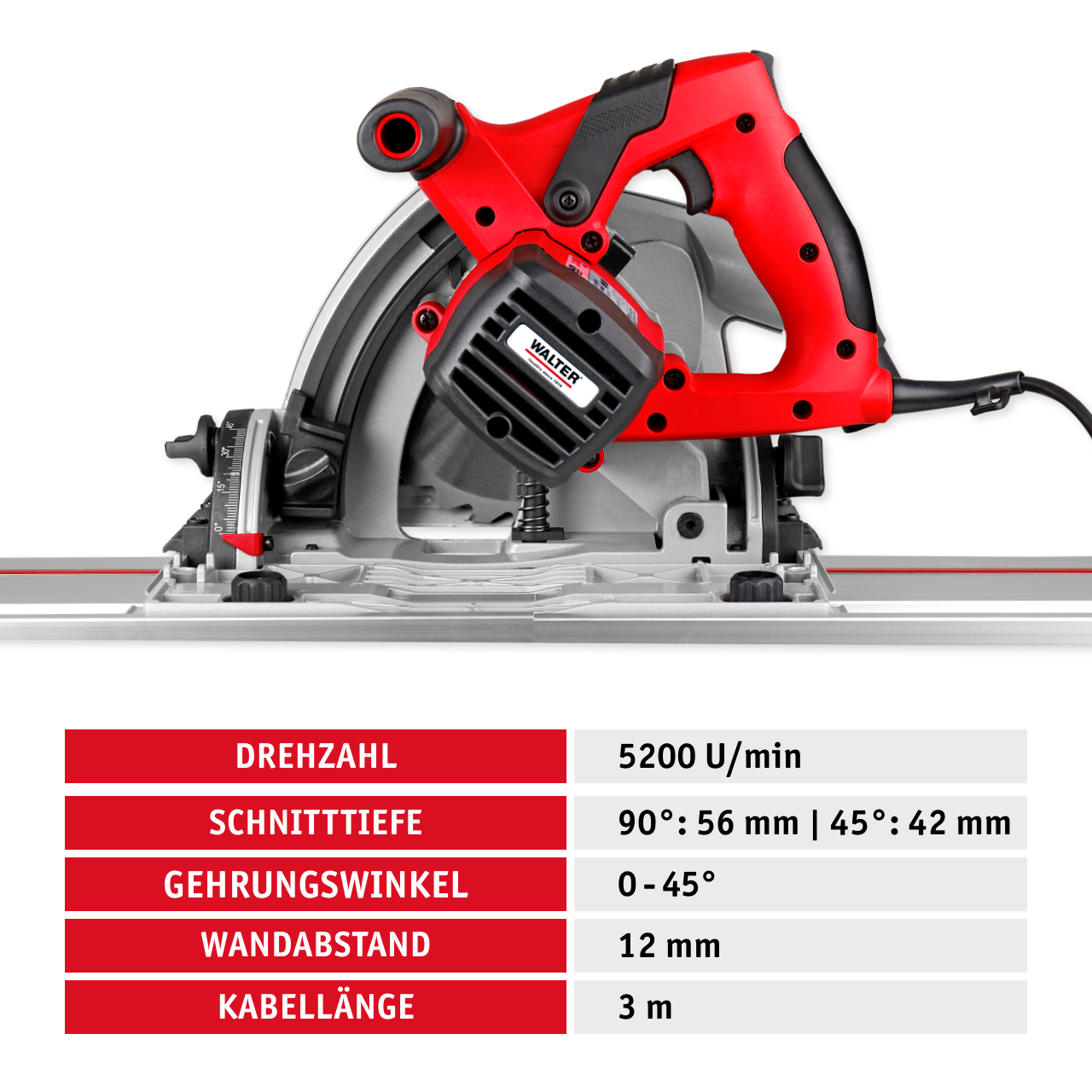

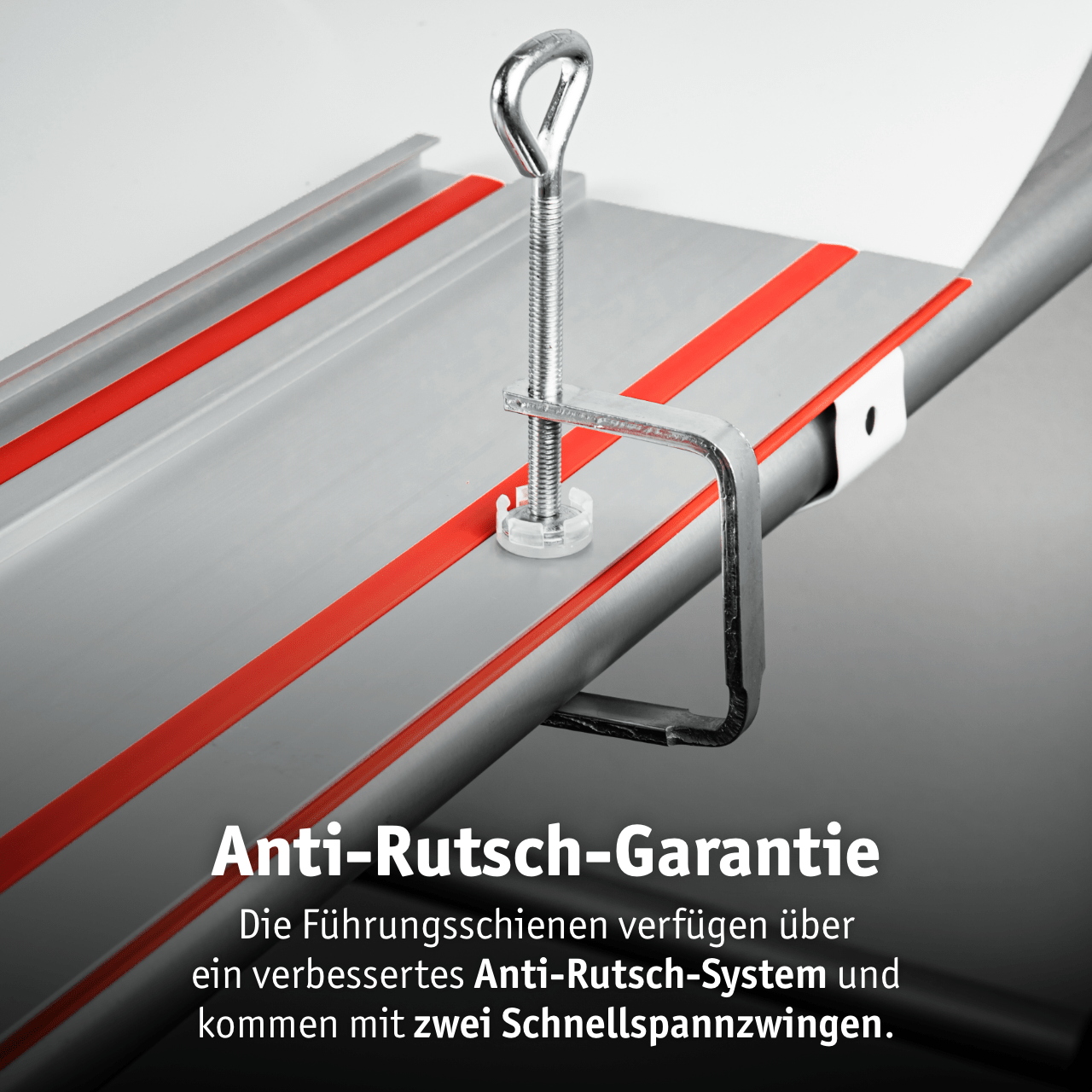

Plunge saw 1200 W
The WALTER 1200 W plunge-cut saw with guide rails impresses with precise cutting depth adjustment, a powerful motor and two saw blades – ideal for precise cuts in the home and garden.
Crowd
The most important advantages at a glance
- Greater precision : More precise work than with a hand-held circular saw, especially for fine cuts.
- Professional applications : Ideal for sawing recesses and setting shadow gaps.
- Made for plunge cuts : The saw blade can plunge directly into the material, which is particularly advantageous for recesses.
- Ergonomic handling : Light and easy to maneuver, requiring little effort.
- Adjustable cutting height : Allows precise adjustments for different applications.
Ideal for professional fine work
- Sawing recesses (e.g. socket and switch openings in kitchen worktops)
- Set shadow gaps (=narrow gap for the visual separation of components) (e.g. laying laminate or parquet flooring)
- Longitudinal cuts (e.g. cutting sheet materials such as plywood)
- Edge processing (e.g. table tops or shelves)
What should you look for when buying a plunge saw?
- Motor power : Ideally 1200 watts for demanding projects
- Saw blade size : Common sizes are 165 mm or 190 mm, ideal with 24 or 48 teeth
- Cutting depth and angle : Adjustable cutting depth up to 55 mm and angle adjustment ideally in the range of 0 to 45 degrees for versatile applications; easy-to-read scale
- Guide rail : Increases cutting accuracy and ensures straight cuts
- Cutting height adjustment : Make sure there is a cutting height adjustment for precise and easy adjustments
What is a circular hand saw?
A hand-held circular saw has a pendulum cover that conceals the circular saw blade. The rotation of the saw blade creates straight cuts in wood and plastic.
The hand-held circular saw is placed on the material surface and moved along the cutting line. This makes it ideal for quick rip and cross cuts in panels and beams. The saw offers adjustable cutting depth and angle, increasing its versatility.
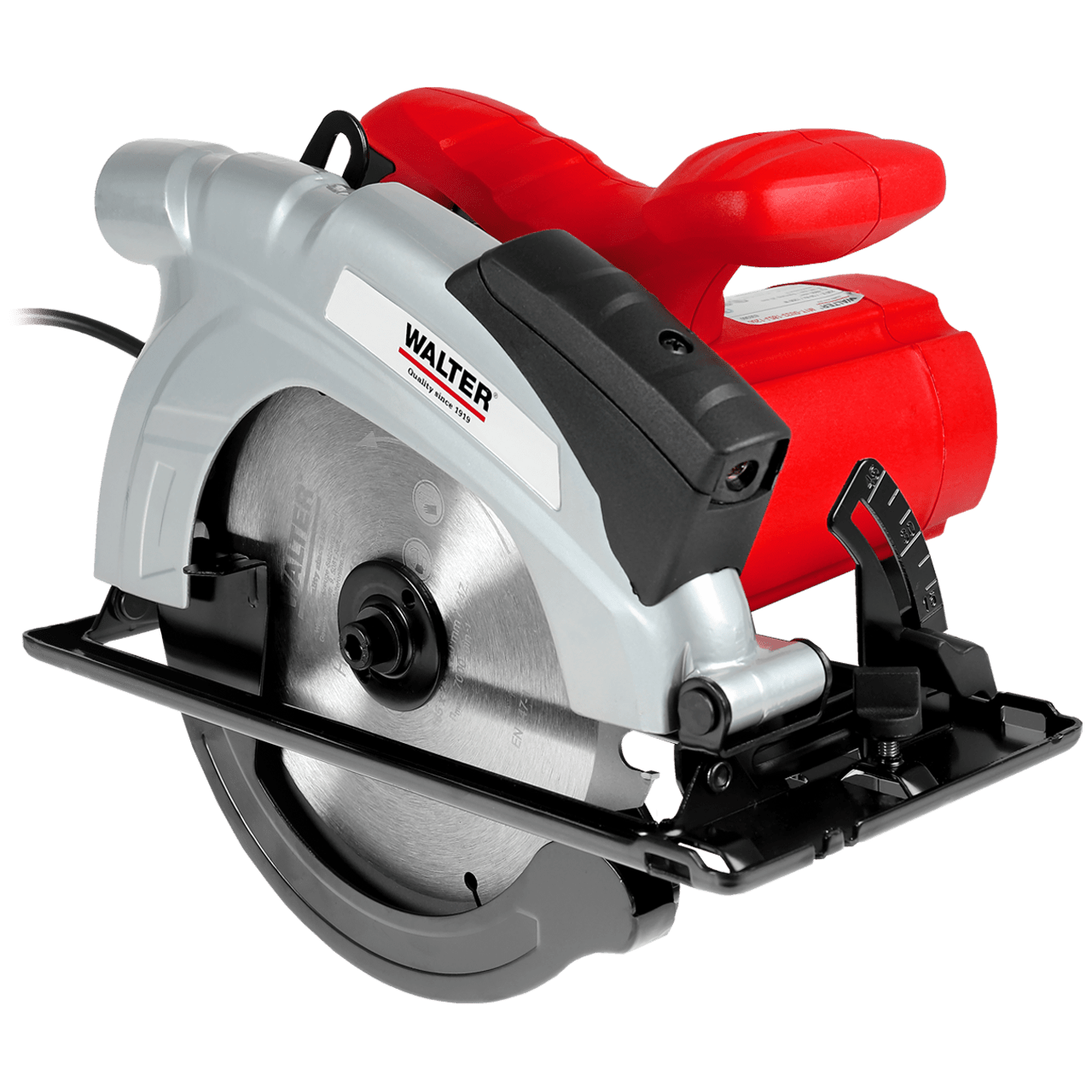
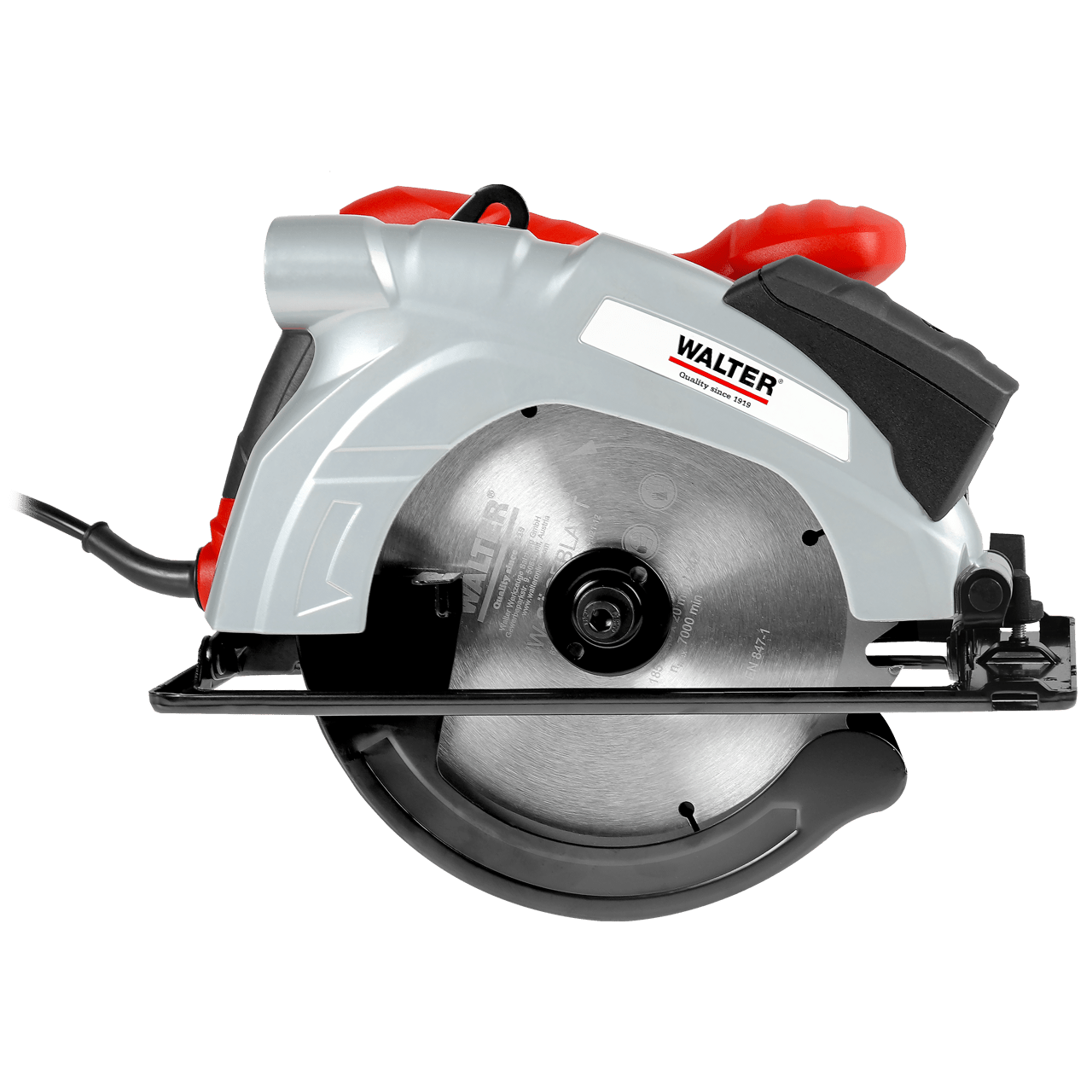
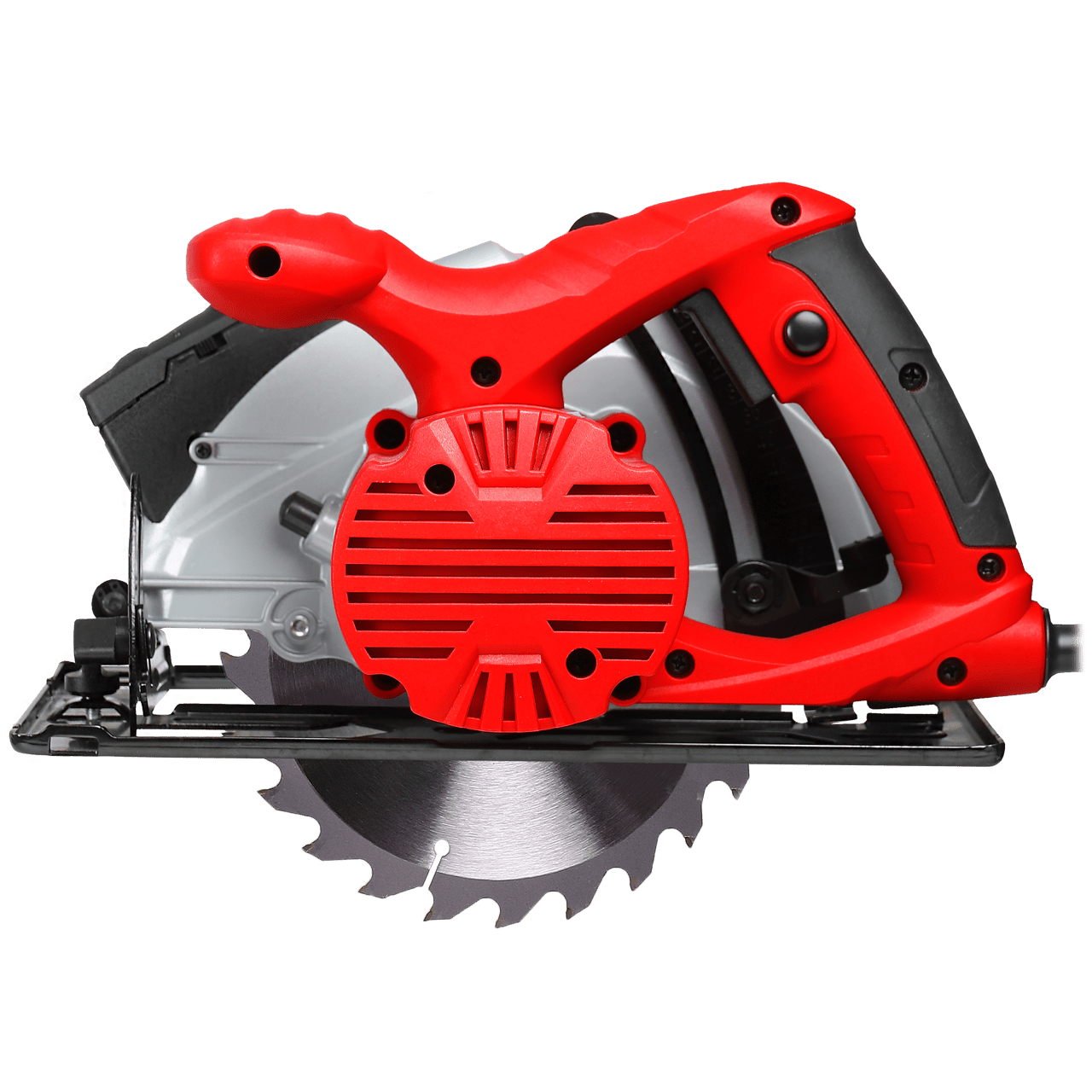
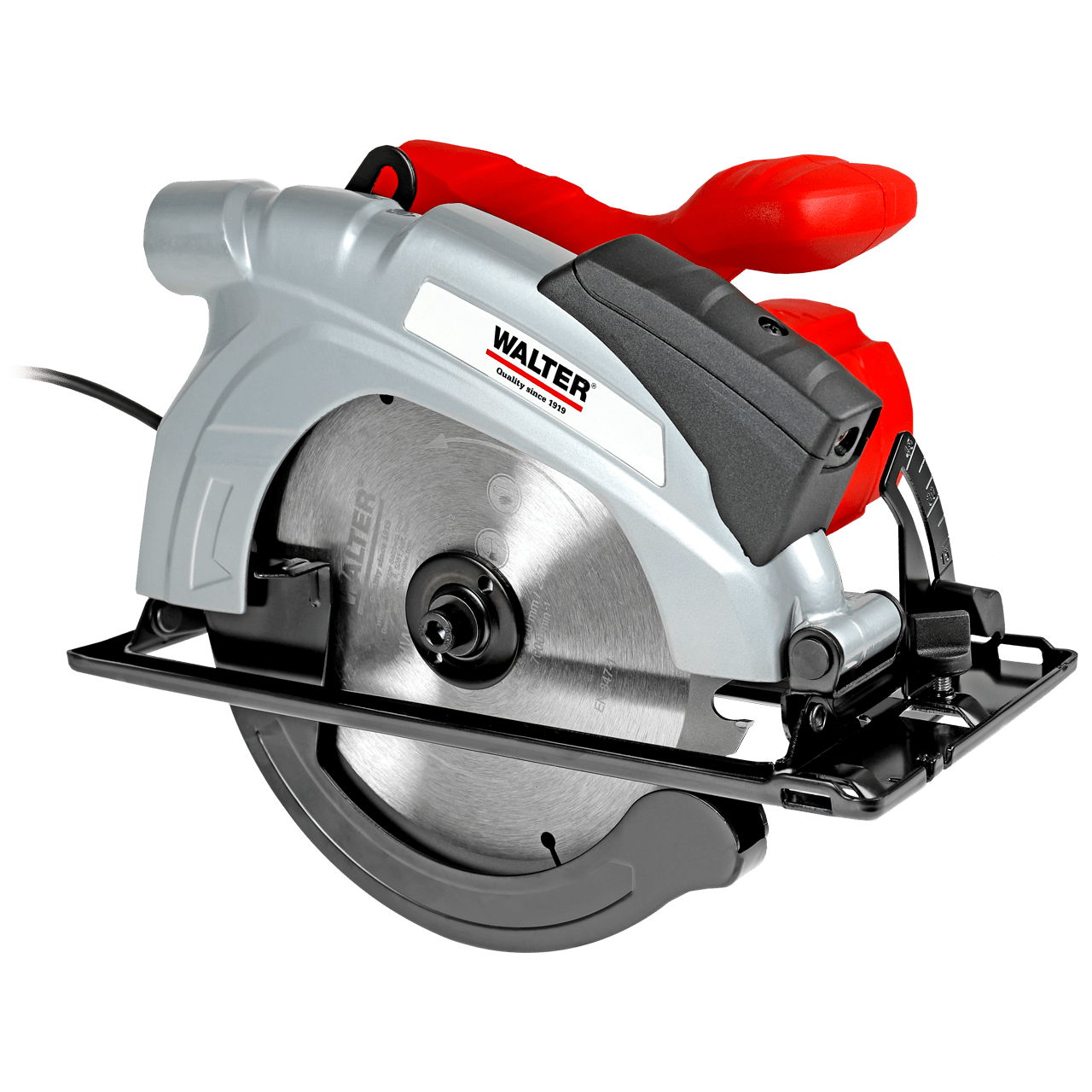
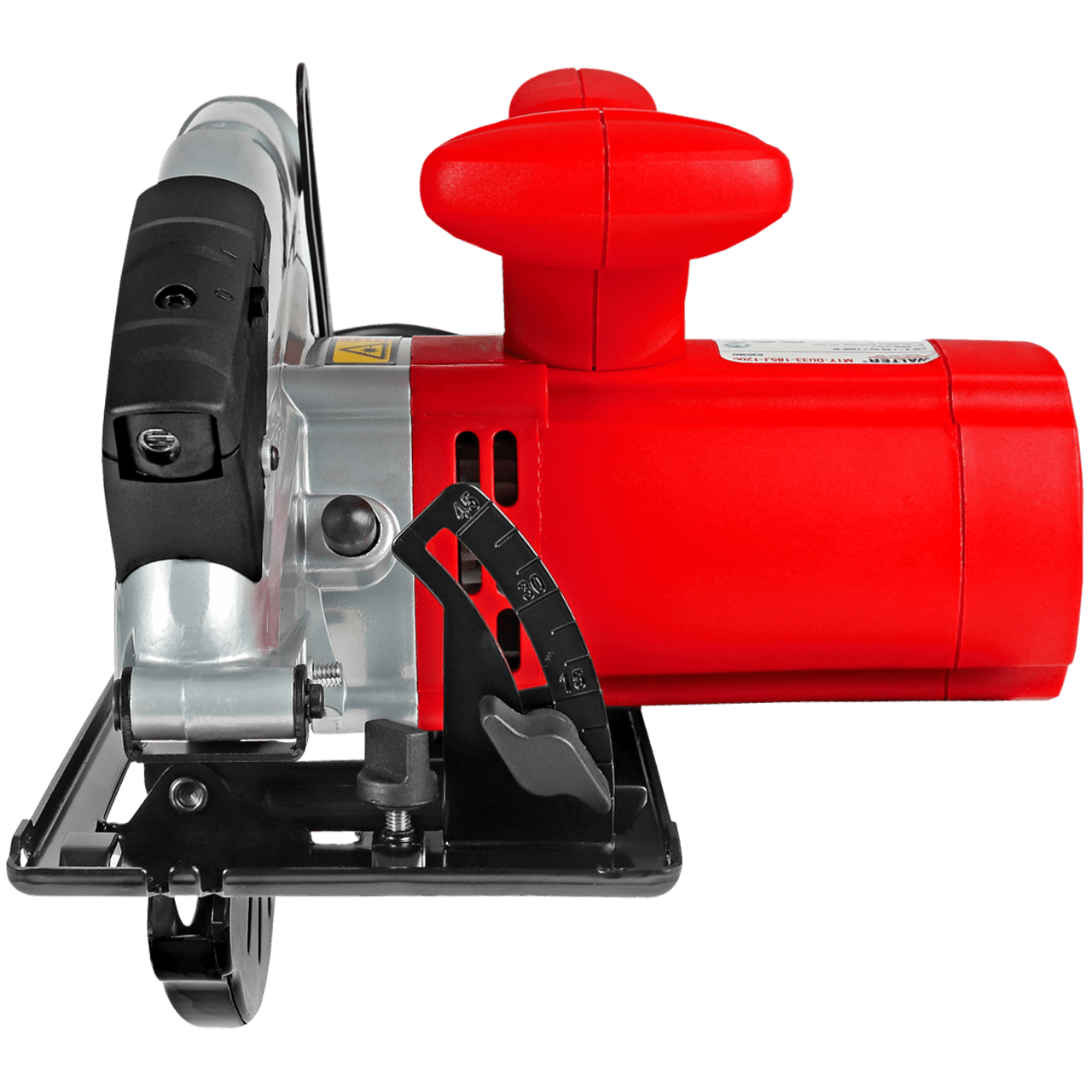
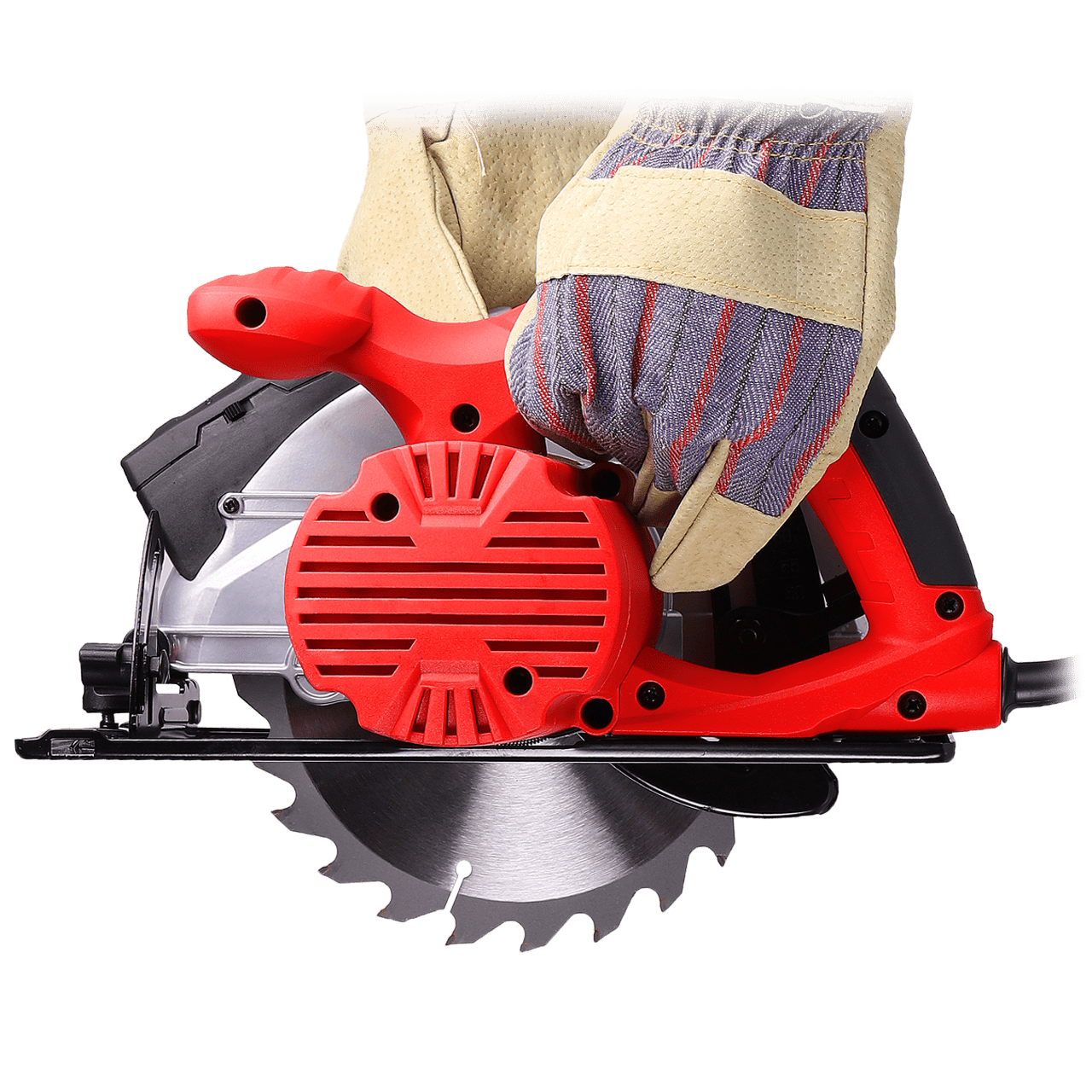
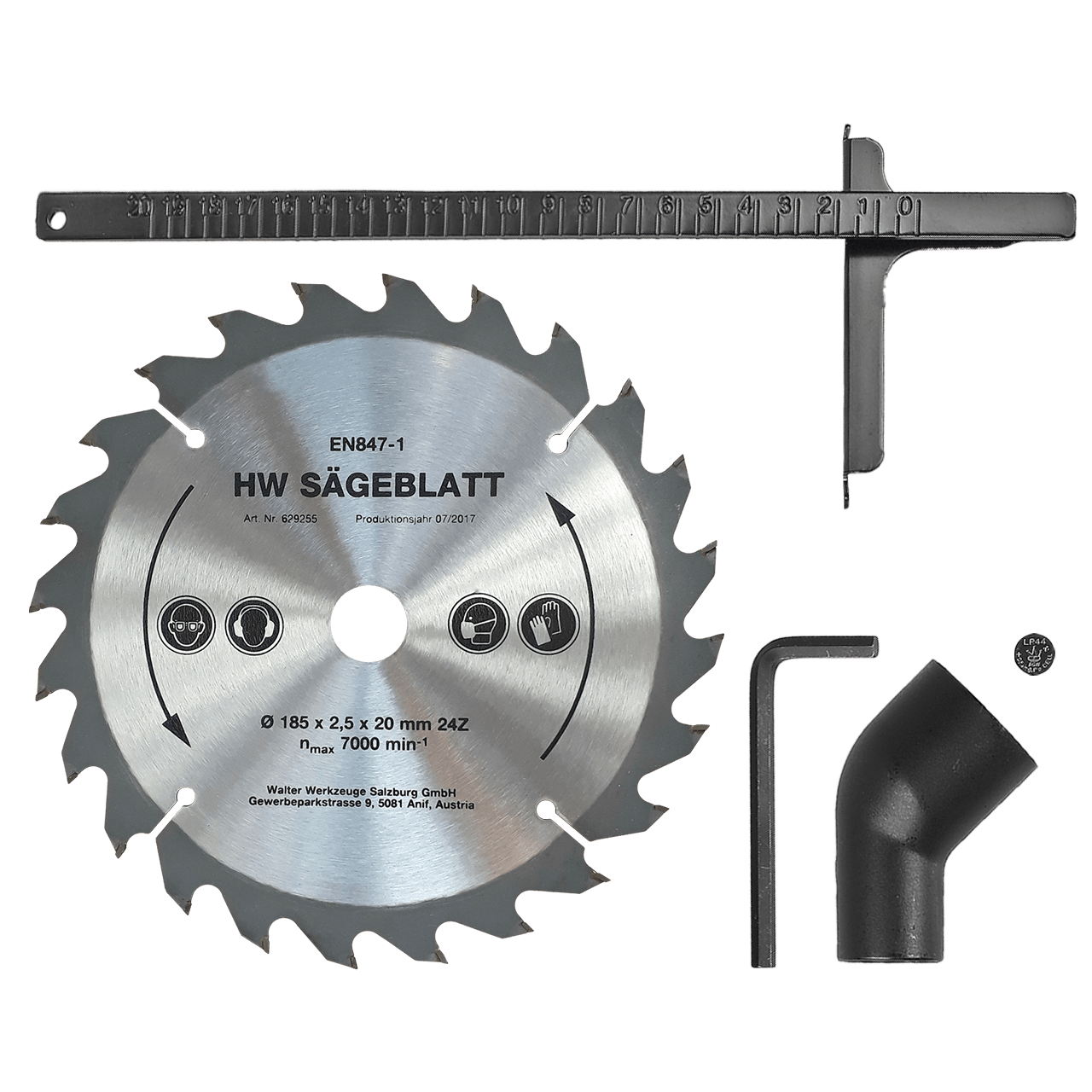
Handheld circular saw 1200 W
The WALTER 1200 W hand-held circular saw with laser cutting guide enables precise longitudinal and miter cuts up to 45° – with parallel stop, dust extraction connection and ready to use immediately thanks to the included batteries.
Crowd
The most important advantages at a glance
- Speed : Allows fast cuts in various materials
- Versatility : Suitable for longitudinal and cross-sectional cuts and for various materials such as wood and plastic
- Adjustable cutting depth and angle : Offers flexibility for different applications
- Compatibility with guide rails : Increases cutting accuracy and ensures straight cuts
- Cost-effectiveness : Offers good value for money for a wide range of applications
Ideal for rough cuts
- Longitudinal cuts (e.g. cutting long wooden boards or panels)
- Cross sections (e.g. cutting beams and strips)
- Cutting of sheet material (e.g. plywood or blockboard for furniture construction)
- Floor laying (e.g. cutting laminate or parquet floors)
What should you look for when buying a circular saw?
- Motor power : Ideally 1200 watts for demanding projects
- Cutting depth and angle : Adjustable cutting depth up to 55 mm and angle adjustment ideally in the range of 0 to 45 degrees for versatile applications
- Cutting height adjustment : Make sure there is a cutting height adjustment for precise and easy adjustments
- Saw blade size : Common sizes are 165 mm or 190 mm, ideal with 24 or 60 teeth
- Guide rail : Ideal for precise, straight cuts and especially helpful for longer cuts; however, not absolutely necessary for rough cuts, freehand cuts or smaller workpieces
Which saw is better suited for which purpose?
The plunge-cut saw is ideal for precise cuts, especially on countertops and laminate where exact cutouts are required. The hand-held circular saw, on the other hand, is suitable for quick, rough cuts in large materials such as wood panels, offering high mobility and flexibility.
Precision vs. flexibility
The plunge-cut saw impresses with its precise, adjustable cutting depth and clean, tear-free edges – perfect for detailed work. While the hand-held circular saw cuts deeper, it produces coarser cut edges, making it ideal for quick, rough cuts in large materials. The hand-held circular saw also offers high mobility and, thanks to its low weight, is easy to transport and use anywhere. It is well-suited for straight cuts, but less suitable for curved or shaped cuts. With a guide rail, even long cuts can be achieved precisely and safely.
Cutting depth and cutting quality
The hand-held circular saw achieves greater cutting depths, but often leaves unclean edges in materials like plywood or laminate. The plunge saw, on the other hand, ensures precise cuts with minimal tear-out—ideal for clean results in delicate materials.
Conclusion: Plunge saw for precision work, hand-held circular saw for rougher work
The choice between a plunge saw and a hand-held circular saw depends on your specific project requirements.
The plunge-cut saw is ideal for precise cuts and clean edges, especially on materials like countertops. It offers precise adjustment options and minimizes tear-out, making it the perfect choice for detailed work.
The hand-held circular saw , on the other hand, is ideal for quick, rough cuts of large materials. With its greater cutting depth, it's ideal for rip and cross cuts, but often leaves unsightly cut edges.
The plunge saw is usually more expensive, but it is more versatile than a hand-held circular saw.
FAQ
Frequently Asked Questions
What to cut with a plunge saw?
The plunge-cut saw allows for precise cuts in wood, laminate, or countertops. It's ideal for recesses and fine rip cuts, as the saw blade can plunge directly into the material.
Can you use a circular saw as a plunge saw?
A hand-held circular saw cannot be used like a plunge-cut saw, as it only cuts from the edge. For precise cuts in the center of the material, a plunge-cut saw is required.
Can you use a plunge saw without a guide rail?
Yes, a plunge-cut saw can be used without a guide rail, but precision will suffer. A guide rail is recommended for straight and precise cuts.


